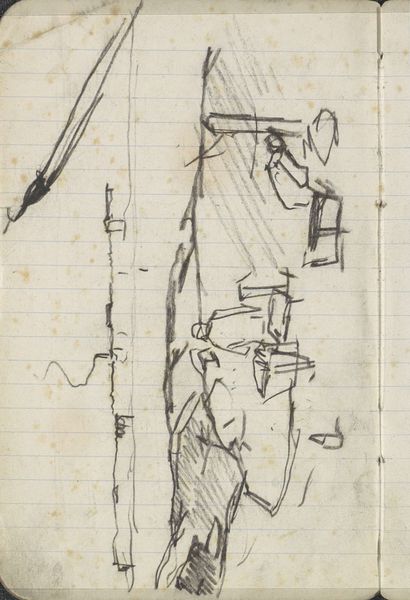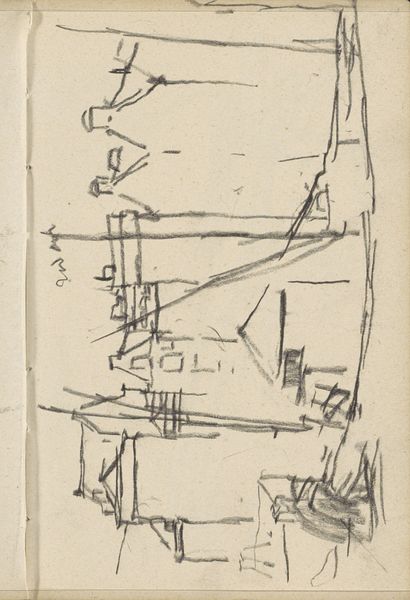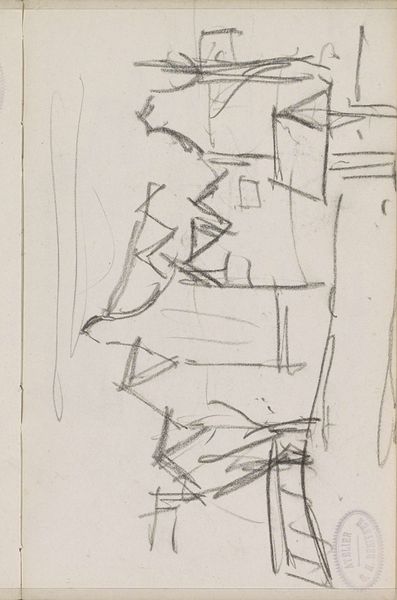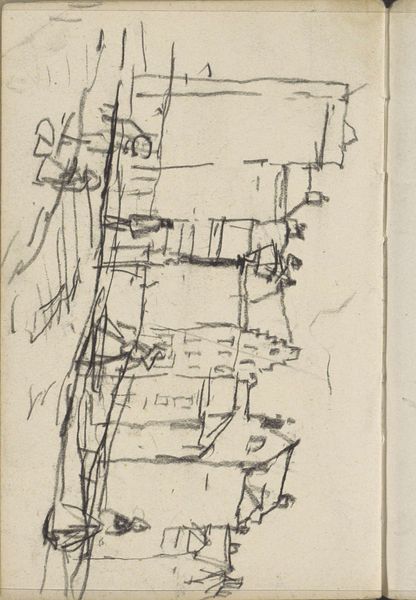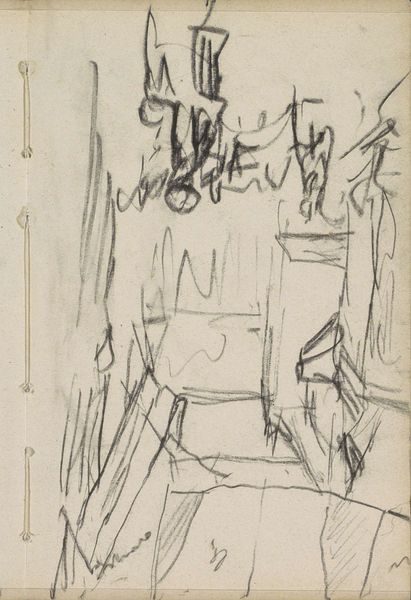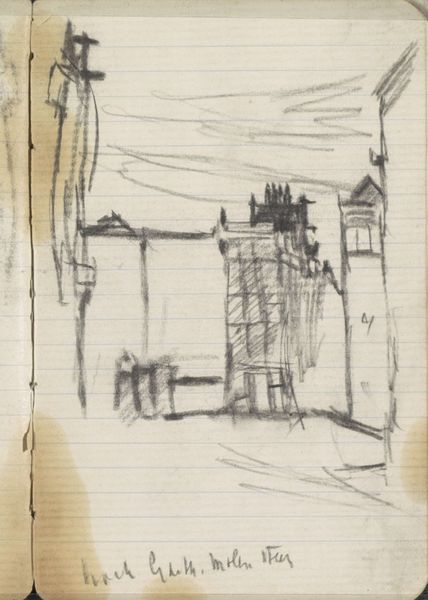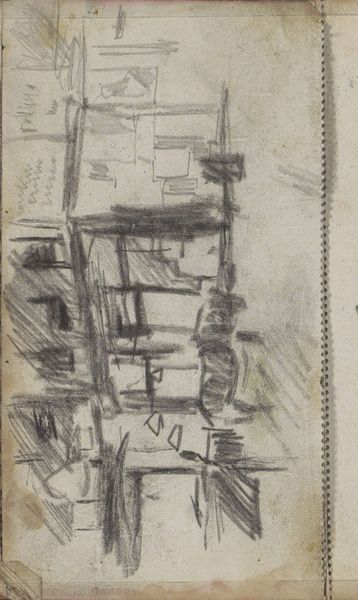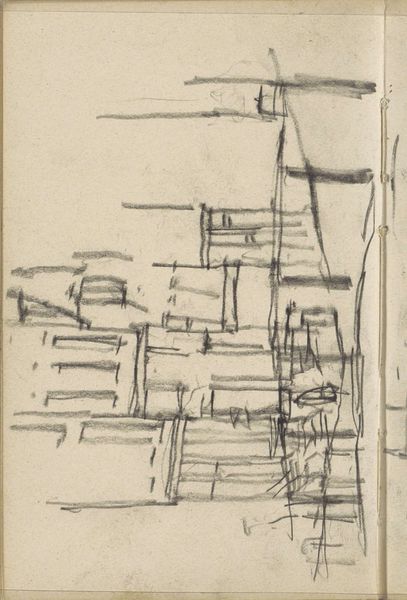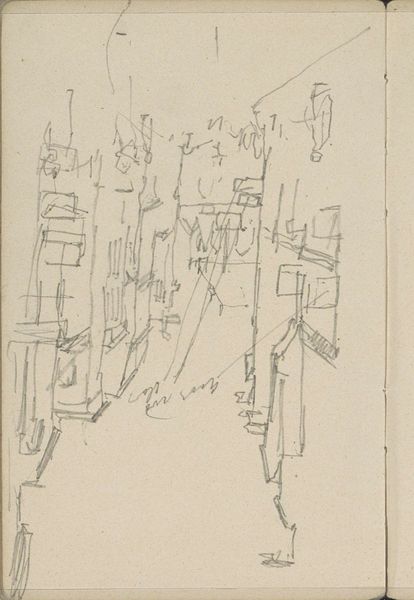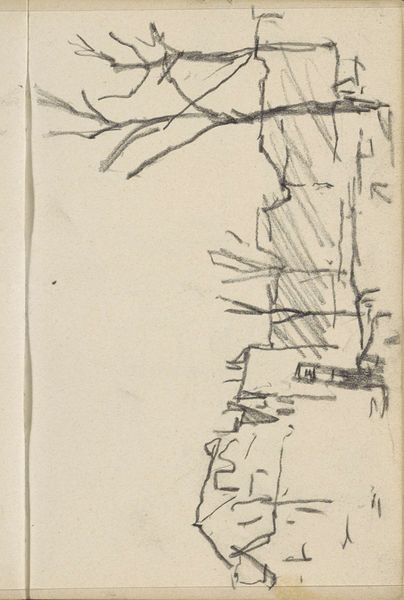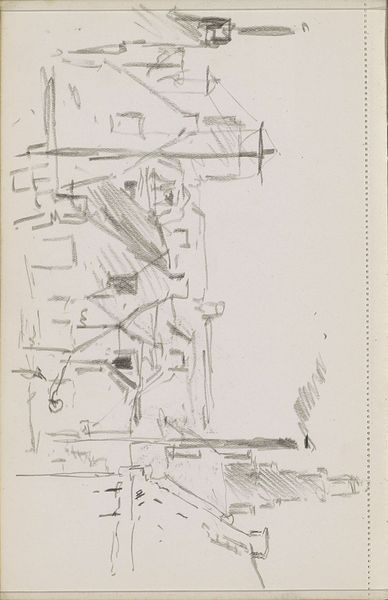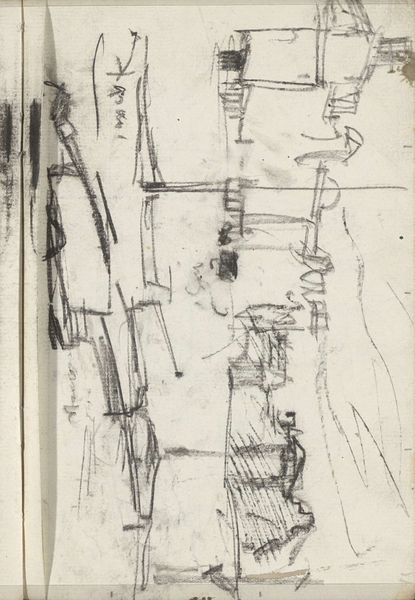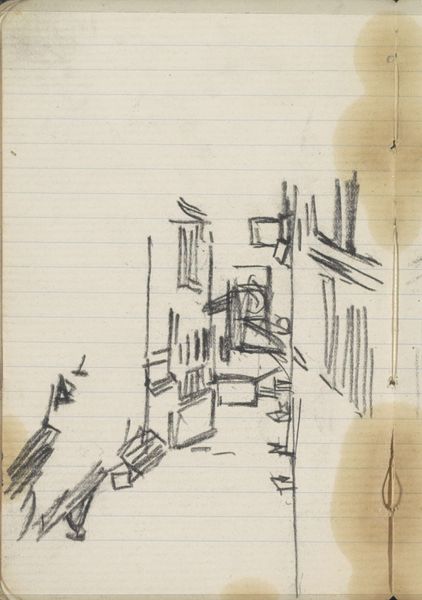
Dimensions: height 134 mm, width 78 mm
Copyright: Rijks Museum: Open Domain
Editor: This pencil drawing, "Gezicht op de Hartenstraat in Amsterdam" by George Hendrik Breitner, dating from around 1886 to 1923 and currently at the Rijksmuseum, has a ghostly quality. The sketched grid showing through reminds me that it's preliminary work and kind of evokes a dreamlike state, what details do you find significant here? Curator: What strikes me is the grid you mentioned, and its subtle defiance of traditional artistic hierarchy. Breitner's choice to leave it visible isn't merely utilitarian; it reveals the artistic process and comments on how artists, even Impressionists who purported to depict reality, actively constructed their version of reality and often served to visually affirm prevailing bourgeoise expectations about reality.. We see this technique also appear, often ironically, in other contemporary draftsmen from the period. Do you see a social element at play here? Editor: Well, the title points to a real location. So is it a record? Does the city function as a character of its own, separate from human experience? Curator: Exactly. And Breitner, like many of his contemporaries, was deeply interested in portraying the modern city. However, he’s also participating in a tradition where cities themselves are not just locations but symbols of societal shifts, class divisions, and industrial progress – all elements that would have significantly impacted the daily lives of people in Amsterdam. But think about this too; he left the marks on the paper, how the lines emphasize fleeting movement over a sense of stasis. How might that fit into the role of the streetscape as social documentation? Editor: That's interesting. So, while it's Impressionistic in style, it's also commenting on the broader social landscape and the city’s role in shaping people’s lives. Curator: Precisely. The drawing prompts us to consider how Breitner’s Amsterdam—its architecture, its layout, even its visible pencil marks—communicates not just a visual scene but a complex set of socio-historical circumstances. Editor: I'll definitely be thinking more about the cultural commentary embedded within this impressionistic style going forward. Thanks!
Comments
No comments
Be the first to comment and join the conversation on the ultimate creative platform.
